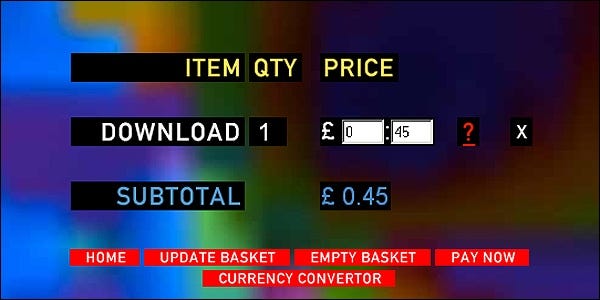Radiohead’s “In Rainbows” Is Beloved By Fans Ten Years After Release (And The Data Proves It)
Ten years after it's release, a landmark innovative digital marketing, Radiohead's In Rainbows remains vastly popular, and the most well liked Radiohead album on Pandora.
______________________
Guest post by Glenn Peoples, Music Insights and Analytics at Pandora, on Medium
Radiohead’s In Rainbows is ten years old today. The band’s sixth studio album changed music marketing and generated a media frenzy to match its landmark status. The 10-track release arrived without the advance notice traditionally built into music marketing campaigns. And then there was the pricing. The record industry of 2007 was waging a battle against piracy and passionately debating the value of music. So when Radiohead dropped In Rainbows and gave the public the ability to choose the price the wanted to pay for downloads, pretty much all hell broke loose.
The music on In Rainbows stands for itself, accounting for 25 percent of the band’s 1.2 billion Pandora spins if the song “Creep” is excluded. (“Creep,” a hit from the band’s 1993 debut album, is by far the must-spun Radiohead song. Removing this outlier gives a better sense of other songs’ popularity.) Four of album’s songs rank in the band’s top 10 most-spun songs: “Reckoner” at #6; “Weird Fishes/Arpeggi” #8; “Jigsaw Falling Into Place” at #9; and “House of Cards” at #10. The same four songs are also the most successful at getting thumbs (a thumb being Pandora’s now-famous version of a like button), suggesting they’re the most beloved songs in the group’s catalog. Of all albums, In Rainbows is the most successful with thumbs.

In Rainbows is one of the, if not the most, impactful albums in the digital music era. Before October 2007, no other band of Radiohead’s stature had self-released an album and foregone traditional retail channels. It was a master class in e-commerce. Other artists’ websites offered merchandise and music, typically sold through a third party, but nobody else pulled the same amount of traffic — comScore said 1.2 million people visited the In Rainbows site in the month of its release. And, most notably, no other major band used an honor box that allowed fans to choose the price they paid for an album download. Some fans and curious passers-by were sure to pay nothing. Indeed, 60 percent of U.S. residents who download the album paid nothing, according to the same comScore survey. But the band would acquire their email address in order to send their download codes. A free album for an email address—and serious credibility with fans—isn’t a bad tradeoff.
The music industry of 2008 was skittish and uncertain. File-sharing was a far greater perceived threat than today. Revenues were falling. At conferences and in the press, trade groups and industry executives defended the inherent value of music against free, illegal acquisition. In this environment, Radiohead’s pay-what-you-want offering was mind-blowing for giving fans an outsized impact on the band’s financial success. “They are the ones to decide, yes or no, to buy an album, a single or a concert ticket at the available price,” the New York Times’ Jon Pareles wrote the day after the album’s release. “Radiohead’s digital-era flexibility allows more supporters to make themselves known.” ComScore also found the average price paid by Americans for an In Rainbows download was $8.05 — greater than an iTunes album’s wholesale price.

Except for Beyonce’s surprise digital release in 2013 (a video album also recorded surreptitiously and released without warning), few albums have done as much to reshape the notion of artistic freedom. Radiohead, recently out of its contract with EMI subsidiary Parlophone, could make whatever music it wanted, decide how to release the music, how much to charge, and select its label partners for a later commercial release. No label with a material market share followed Radiohead in selling its music with an honor box. Record labels have changed, and the way music is licensed has changed, but singles and albums are still distributed to digital retail and streaming services. Record labels continue to sign artists and new labels are always sprouting up. And there’s less need for an honor box given all the marketing tools, including Pandora’s Artist Marketing Platform, available to reach fans.
It’s telling that In Rainbows was Radiohead’s lone pay-what-you-want release. Today, free is less a marketing tactic than a relic of an era when artists were experimenting with the Internet’s power and possibilities. (As a side note, the author of The Long Tail: Why the Future of Business Is Selling Less of More wrote a book, titled Free: The Power of a Radical Price, about the power in giving away products. It didn’t come close to the impact of The Long Tail.) “The point was a band could give away an album and still make good money,” Radiohead singer Thom Yorke explained to Wired magazine two months after In Rainbows was released. “It’s not supposed to be a model for anything else. It was simply a response to a situation. We’re out of contract. We have our own studio. We have this new server. What the hell else would we do?”
The media attention around In Rainbows, worth millions in paid marketing, carried through to the CD and LP release (on ATO Records in the U.S. and many other countries in January 2008). To no surprise, the album debuted at #1 on the Billboard 200 album chart. In June, the song “Nude” reached #37 on Billboard’s Hot 100 singles chart. On the media attention, Will Botwin, ATO Records Group president/CEO, quipped. “The band has probably gotten more publicity without saying anything than any band in the history of rock and roll.” Ten years later, the record probably still stands.